This is part 3 of a 4-part series on Larry’s Jalapeño Cheese Bread.
Act II — The Cheese
I grate my own, but then I’m retired and often bored. Probably easier just to get cheese already shredded. I tried shredding cheese in my trusty Cuisinart™, but with the mild cheddar I use, it didn’t work out too well.
I get my best results from my ancient Moulinex™ appliance which is so old it’s model number is in Roman numerals. If I didn’t have it, I’d probably buy (shudder) already grated cheese.
You can use the grated cheese with out dehydrating it, and the flavor will be close—but the end result not quite the same—you will not be able to get the strength of flavor or the appearance.
The dehydrated cheese takes up less volume, which will be important when kneading, and will preserve its structure when baked. Un-dehydrated cheese will ooze into the bread.
If you do not dehydrate the cheese, I’d suggest using a harder cheese such as Cheddar Extra Sharp. Use about ¼-½ pound for two 1 pound loaves recipe. It’s still good though.
I chill the cheese prior to grating. Just grate and spread on the dehydrator trays.
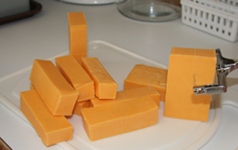
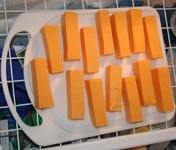
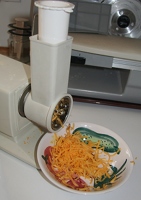
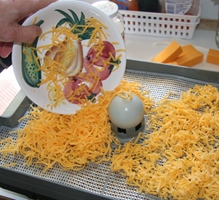
Dehydration will take somewhat longer than the peppers, and should be done with only at most very low heat. The reduction is size is somewhat less than with peppers, and the resulting cheese will be oily and probably stuck together.
Before dehydration
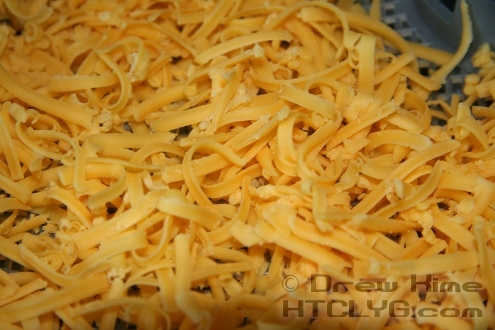
After dehydration
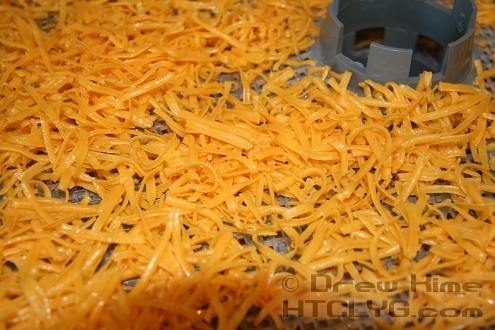
Get all the dried cheese bits and clumps off the tray and into a large bowl. Clumps can be broken up into smaller bits easily, here I use a nylon spatula. Then powder the dried cheese.
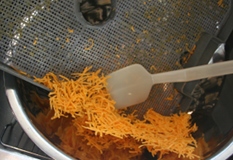
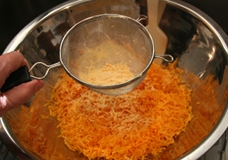
I use dried cheese powder I buy in bulk. Flour will also work. If you are using pre-grated, undehydrated cheese it probably already is powdered, but who knows with what? [EDITOR’S NOTE: That would be powdered cellulose, calcium carbonate and potato starch. See here for Sargento’s explanation of why you shouldn’t mind.]
The powder helps keep the cheese more or less free floating and preserves the oil on the surface. Add enough so that the cheese appears dry and doesn’t stick together. Then into the storage container. We are done.
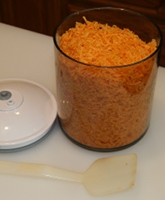
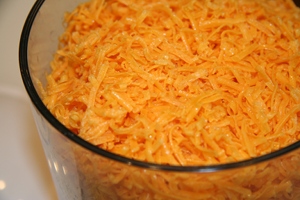
When ready to use, the cheese will most likely be stuck together, but it should be easy to gently break it apart.
Neat tricks for clean-up
Most utensils go in the dishwasher. The L’Equip dehydrator trays also will go in the dishwasher, but use the short, no-heat dry cycle. The L’Equip tray meshes will go in my front loading washer”•just a little soap and bleach with some golf balls (sounds like your living next to a bowling alley).

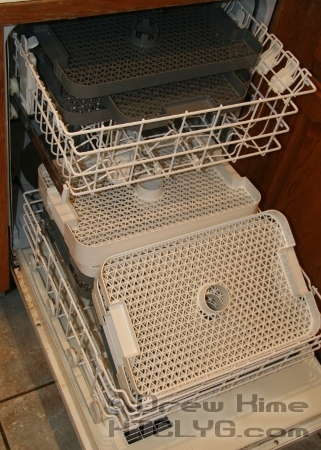

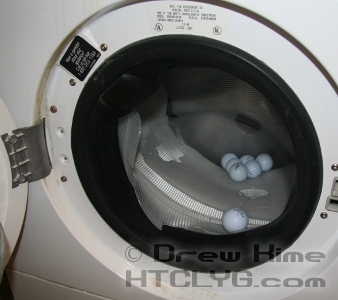
And guess how you dry the L’Equip dehydrator?
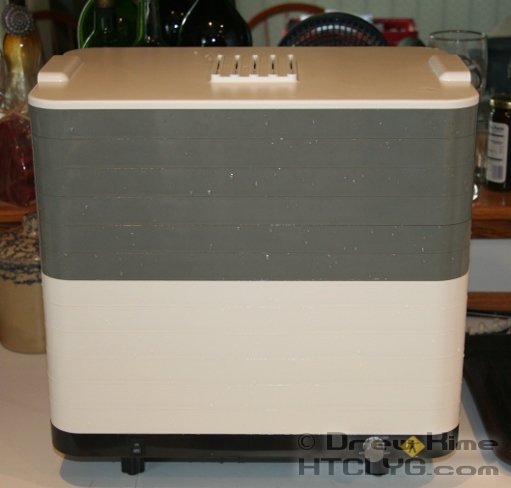
(It’s self drying!)












